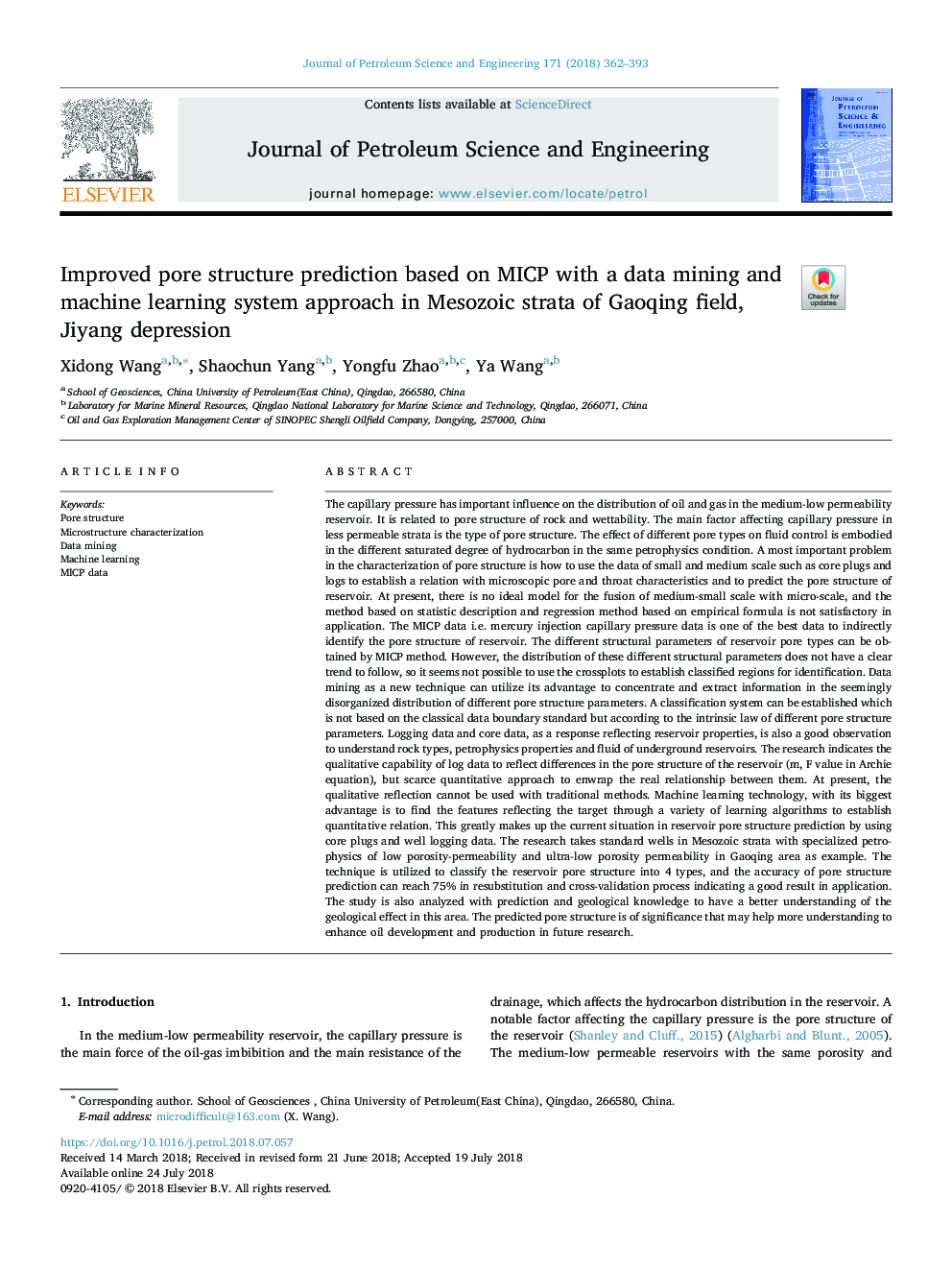| کد مقاله | کد نشریه | سال انتشار | مقاله انگلیسی | نسخه تمام متن |
|---|---|---|---|---|
| 8124319 | 1522770 | 2018 | 32 صفحه PDF | دانلود رایگان |
عنوان انگلیسی مقاله ISI
Improved pore structure prediction based on MICP with a data mining and machine learning system approach in Mesozoic strata of Gaoqing field, Jiyang depression
دانلود مقاله + سفارش ترجمه
دانلود مقاله ISI انگلیسی
رایگان برای ایرانیان
کلمات کلیدی
موضوعات مرتبط
مهندسی و علوم پایه
علوم زمین و سیارات
زمین شناسی اقتصادی
پیش نمایش صفحه اول مقاله

چکیده انگلیسی
The capillary pressure has important influence on the distribution of oil and gas in the medium-low permeability reservoir. It is related to pore structure of rock and wettability. The main factor affecting capillary pressure in less permeable strata is the type of pore structure. The effect of different pore types on fluid control is embodied in the different saturated degree of hydrocarbon in the same petrophysics condition. A most important problem in the characterization of pore structure is how to use the data of small and medium scale such as core plugs and logs to establish a relation with microscopic pore and throat characteristics and to predict the pore structure of reservoir. At present, there is no ideal model for the fusion of medium-small scale with micro-scale, and the method based on statistic description and regression method based on empirical formula is not satisfactory in application. The MICP data i.e. mercury injection capillary pressure data is one of the best data to indirectly identify the pore structure of reservoir. The different structural parameters of reservoir pore types can be obtained by MICP method. However, the distribution of these different structural parameters does not have a clear trend to follow, so it seems not possible to use the crossplots to establish classified regions for identification. Data mining as a new technique can utilize its advantage to concentrate and extract information in the seemingly disorganized distribution of different pore structure parameters. A classification system can be established which is not based on the classical data boundary standard but according to the intrinsic law of different pore structure parameters. Logging data and core data, as a response reflecting reservoir properties, is also a good observation to understand rock types, petrophysics properties and fluid of underground reservoirs. The research indicates the qualitative capability of log data to reflect differences in the pore structure of the reservoir (m, F value in Archie equation), but scarce quantitative approach to enwrap the real relationship between them. At present, the qualitative reflection cannot be used with traditional methods. Machine learning technology, with its biggest advantage is to find the features reflecting the target through a variety of learning algorithms to establish quantitative relation. This greatly makes up the current situation in reservoir pore structure prediction by using core plugs and well logging data. The research takes standard wells in Mesozoic strata with specialized petrophysics of low porosity-permeability and ultra-low porosity permeability in Gaoqing area as example. The technique is utilized to classify the reservoir pore structure into 4 types, and the accuracy of pore structure prediction can reach 75% in resubstitution and cross-validation process indicating a good result in application. The study is also analyzed with prediction and geological knowledge to have a better understanding of the geological effect in this area. The predicted pore structure is of significance that may help more understanding to enhance oil development and production in future research.
ناشر
Database: Elsevier - ScienceDirect (ساینس دایرکت)
Journal: Journal of Petroleum Science and Engineering - Volume 171, December 2018, Pages 362-393
Journal: Journal of Petroleum Science and Engineering - Volume 171, December 2018, Pages 362-393
نویسندگان
Xidong Wang, Shaochun Yang, Yongfu Zhao, Ya Wang,